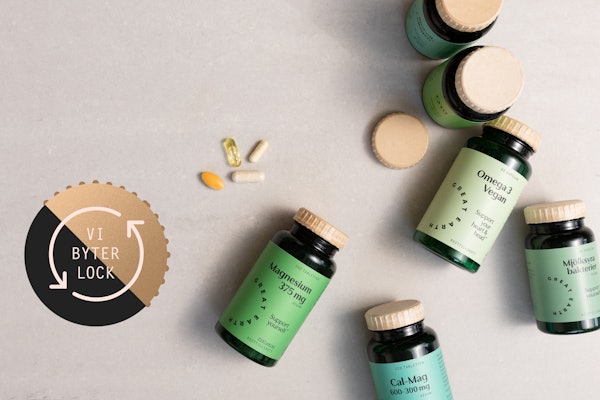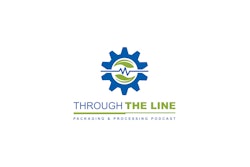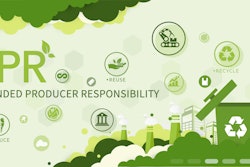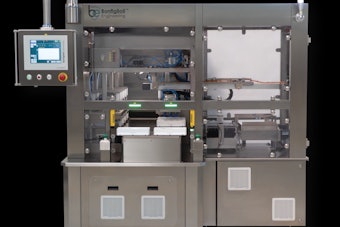In response to Keith Campbell's post last month, OEE is Like Sailing, a reader questioned why all the sudden hype about a technology that is so old. I think that the answer is that it's not about the technology, it's about the business. And sometimes the business performance is so low, that technology isn't the starting place for a solution.
More than 10 years ago, I participated in benchmarking that convinced me that packagers could implement OEE on a uniform basis to optimize operations in plants around the world. One European-based global beverage processor I visited prominently displayed up-to-date OEE's for every line in the company throughout its engineering offices. Managing OEE was part of the culture.
But many packagers, especially in the U.S., are reluctant to apply any new technology until some business crisis drives them to it. Packagers today are facing crisis. Consumer packaged goods plants are trying to improve their performance metrics to keep operations from being sent to co-packers or, worse yet, to plants in Mexico or China. Pharmaceutical companies are feeling pressure from many sources and are now focusing on previously ignored areas such as packaging line performance.
Pharmaceutical company packaging OEE's are reported to be among the lowest in the industry. Experience teaches that those feeling the greatest amount of pain are the ones most likely to successfully drive change. Perhaps that is why three giant pharmaceutical companies reported on their efforts in this area at ARC's Forum on Winning Strategies and Best Practices for Global Manufacturers.
Bristol-Myers Squibb described development of what was described as a fully automated paperless manufacturing operational philosophy. The manufacturing execution system (MES) architecture included integration schemes for documentation, training, laboratory management, calibration, building management and shop floor systems. Shop floor integration resulted in creation of electronic batch records via S88 and S95 compliant integration of distributed control systems (DCS), a plant data historian, and an SAP enterprise resource planning system (ERP). Although packaging systems aren't typically integrated through a DCS architecture, the packaging events are considered part of the batch record, so packaging data is currently integrated manually.
Pfizer described a similar program that began with a focus on integrating batch analysis and laboratory information management (LIMS) records but shifted emphasis to packaging line OEE as a result of management concern for performance. The resulting Packaging Excellence Project was implemented in Latin-American packaging operations where paper-based OEE systems had been in use. Rather than implementing Pfizer's Pfind-IT system with automatic data collection, a lite version of the system was implemented that uses manual data entry through 3 interface screens. Data is collected hourly for the OEE analysis.
Eli Lilly was the third pharmaceutical company that reported on the use of OEE in packaging operations. In its plants, data is collected manually on 75 – 80% of the lines with the remaining using some form of automatic data collection.
These three reports confirm what many of us know: that automatic collection of data from packaging lines to calculate OEE is difficult. But as OEE expert Paul Zepf pointed out, you really don't need automatic data collection until OEE's exceed 75%. This is one of those profound statements that should be so obvious that most of us will miss it. I did.
Until a line is routinely operating at an OEE of 75% or higher, which most aren't, OEE isn't a technology problem for engineers at all--but it is a huge opportunity for those running the business.
--By Keith Campbell, OntheEdge Blogger
More than 10 years ago, I participated in benchmarking that convinced me that packagers could implement OEE on a uniform basis to optimize operations in plants around the world. One European-based global beverage processor I visited prominently displayed up-to-date OEE's for every line in the company throughout its engineering offices. Managing OEE was part of the culture.
But many packagers, especially in the U.S., are reluctant to apply any new technology until some business crisis drives them to it. Packagers today are facing crisis. Consumer packaged goods plants are trying to improve their performance metrics to keep operations from being sent to co-packers or, worse yet, to plants in Mexico or China. Pharmaceutical companies are feeling pressure from many sources and are now focusing on previously ignored areas such as packaging line performance.
Pharmaceutical company packaging OEE's are reported to be among the lowest in the industry. Experience teaches that those feeling the greatest amount of pain are the ones most likely to successfully drive change. Perhaps that is why three giant pharmaceutical companies reported on their efforts in this area at ARC's Forum on Winning Strategies and Best Practices for Global Manufacturers.
Bristol-Myers Squibb described development of what was described as a fully automated paperless manufacturing operational philosophy. The manufacturing execution system (MES) architecture included integration schemes for documentation, training, laboratory management, calibration, building management and shop floor systems. Shop floor integration resulted in creation of electronic batch records via S88 and S95 compliant integration of distributed control systems (DCS), a plant data historian, and an SAP enterprise resource planning system (ERP). Although packaging systems aren't typically integrated through a DCS architecture, the packaging events are considered part of the batch record, so packaging data is currently integrated manually.
Pfizer described a similar program that began with a focus on integrating batch analysis and laboratory information management (LIMS) records but shifted emphasis to packaging line OEE as a result of management concern for performance. The resulting Packaging Excellence Project was implemented in Latin-American packaging operations where paper-based OEE systems had been in use. Rather than implementing Pfizer's Pfind-IT system with automatic data collection, a lite version of the system was implemented that uses manual data entry through 3 interface screens. Data is collected hourly for the OEE analysis.
Eli Lilly was the third pharmaceutical company that reported on the use of OEE in packaging operations. In its plants, data is collected manually on 75 – 80% of the lines with the remaining using some form of automatic data collection.
These three reports confirm what many of us know: that automatic collection of data from packaging lines to calculate OEE is difficult. But as OEE expert Paul Zepf pointed out, you really don't need automatic data collection until OEE's exceed 75%. This is one of those profound statements that should be so obvious that most of us will miss it. I did.
Until a line is routinely operating at an OEE of 75% or higher, which most aren't, OEE isn't a technology problem for engineers at all--but it is a huge opportunity for those running the business.
--By Keith Campbell, OntheEdge Blogger


















